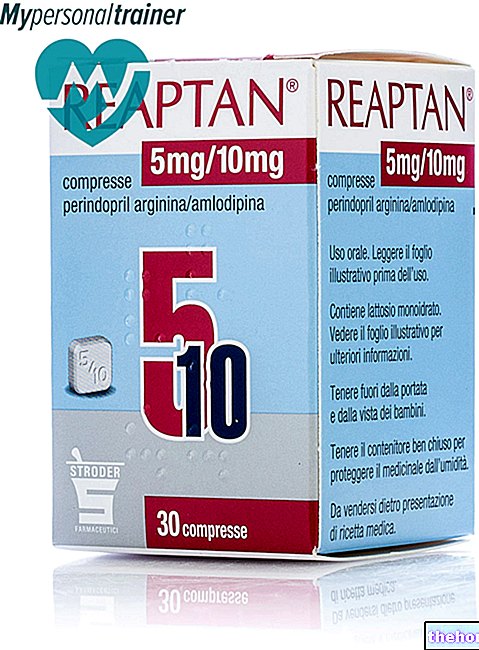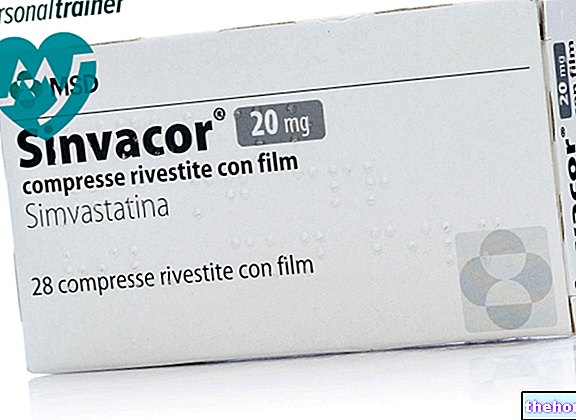Active ingredients: Oxybutynin (Oxibutinin hydrochloride)
Oxibutinin EG 5 mg tablets
Why is Oxibutinin Stada used? What is it for?
Oxibutynin STADA belongs to a group of medicines called anticholinergics and spasmolytics.
The spasm (contraction) of some muscles of the bladder wall (detrusor muscles) leads to an increased need to urinate. Oxibutynin EG relaxes these muscles and is therefore used to control bladder function.
Oxibutynin STADA is used to treat overactive bladder disorders associated with the following symptoms:
- urinating too frequently or feeling like you need to urinate too often
- urinary incontinence (when you are unable to control and hold urine)
Oxibutynin STADA can be used in children aged 5 years or older to treat:
- loss of control in urination (urinary incontinence)
- increased need or urgency to urinate
- bedwetting, when other treatments have not worked
Contraindications When Oxibutynin EG should not be used
Do not take Oxibutynin STADA
- If you are allergic to oxybutynin hydrochloride or any of the other ingredients of this medicine (listed in section 6).
- If you suffer from "increased eye pressure (glaucoma)
- If you have a blockage that makes it difficult to urinate
- In case of obstruction of the gastrointestinal tract (stomach or intestines)
- If your bowel activity is reduced
- If you have severe inflammatory disease of the large intestine or toxic megacolon (a sudden enlargement of the lower intestinal tract)
- If you suffer from myasthenia gravis. This is a condition that causes muscle weakness.
- If the patient is a child less than 5 years of age.
Precautions for use What you need to know before taking Oxibutynin STADA
Talk to your doctor or pharmacist before taking Oxibutynin STADA.
Check with your doctor or pharmacist before taking your medicine if:
- the person taking the medicine is a child (under 5 years of age is not recommended)
Before taking Oxibutynin STADA, consult your doctor. This is especially important if any of the conditions or diseases listed below affect you. This also applies if you have previously suffered from any of the following conditions:
These conditions include:
- Disorders of the nervous system. Eg:
- multiple sclerosis (a disease that affects the brain and spinal cord)
- autonomic neuropathy. It is a disease of the autonomic nervous system. The autonomic nervous system is the part of the nervous system that controls internal organs. These nerves are not under conscious control and function automatically.
- Parkinson's disease and / or in case of impaired perception. In these cases, oxybutynin can trigger undesirable effects on the nervous system.
- a damaged diaphragm associated with reflux disease or other serious bowel disease
- impaired renal and / or hepatic function
- hyperthyroidism (thyroid overactivity
- heart disease or heart failure
- rapid heartbeat (tachycardia) or irregular heartbeat (arrhythmia)
- high blood pressure (hypertension)
- enlargement of the prostate gland
- fever (increased body temperature)
- if you are 65 or older
Be careful if you work or live in a very hot environment. Oxybutynin STADA makes you sweat less and you may experience heatstroke.
Long-term treatment
Oxibutynin EG also leads to reduced saliva production. Long-term use can cause oral disorders such as:
- caries (decayed teeth)
- gum disease (e.g. periodontal disease)
- general malaise as a result of reduced saliva production
- thrush
You should be aware that a "urinary tract infection" may occur during treatment. If you think you are developing an infection, please contact your doctor.
Your doctor will regularly check your vision and the pressure in your eye (intraocular pressure) during treatment. If you have the impression that you cannot focus images properly or that your vision is suddenly reduced, contact your doctor immediately. doctor!
Do not take Oxybutynin to treat stress or stress incontinence (when you cannot control and hold urine).
If the patient is a child or an elderly person the reaction to Oxybutynin STADA may be greater. The doctor may decide to reduce the dose (for more information on the posology of Oxibutynin STADA, see section 3).
Children
Oxybutynin, the active substance in Oxibutynin STADA, should not be given to children under 5 years old (see "DO NOT take Oxibutynin STADA").
Interactions Which drugs or foods can modify the effect of Oxybutynin STADA
Tell your doctor or pharmacist if you are taking, have recently taken or might take any other medicines.
Take special care if you are taking Oxybutynin at the same time as any of the following medicines:
- Amantadine and other medicines for the treatment of Parkinson's disease (e.g. biperidene, levodopa)
- antihistamines (medicines to treat allergies, e.g. hay fever)
- antipsychotics (e.g. phenothiazines, butyrophenones, clozapine)
- quinidine (to treat heart problems or used as an antimalarial medicine)
- digitalis glycosides (to treat heart problems)
- tricyclic antidepressants (to treat depression)
- atropine and related compounds (used to treat stomach problems such as irritable bowel syndrome)
- dipyridamole (to thin the blood)
- antifungal medicines (e.g. ketoconazole, itraconazole)
- antibiotics called "macrolides" (e.g. erythromycin)
- medicines that can cause or worsen inflammation of the gut (esophagitis) such as bisphosphonates (used to treat bone problems)
Oxibutynin may alter the effect of other medicines by reducing bowel movement. Furthermore, the use of this medicine together with other medicines may alter the effect of oxybutynin.
. Oxibutinin may also reduce the effect of medicines that affect bowel movement (eg cisapride, metoclopramide, domperidone).
Oxibutynin EG and alcohol
Oxibutinin can cause drowsiness or blurred vision. Sleepiness can be increased by alcohol consumption.
Warnings It is important to know that:
Pregnancy and breastfeeding
If you are pregnant or breast-feeding, think you may be pregnant or are planning to have a baby, ask your doctor or pharmacist for advice before taking this medicine.
Do not take Oxibutynin STADA during the first three months of pregnancy. Your doctor may prescribe you Oxibutynin from the fourth month of pregnancy if they think this is clearly needed.
Do not take Oxybutynin STADA if you are breastfeeding. Oxybutynin can reach the baby through breast milk.
Driving and using machines
Oxibutynin STADA can affect your reaction times and impair your vision. You may feel drowsy or have blurred vision while taking this medicine. This may affect your ability to drive, operate machinery and perform hazardous work or work without safe support. This is especially true at the start of treatment, when the dose is increased and when the therapy is changed, as well as in combination with alcohol. Do not drive, use machines or work without safe support if you notice any side effects that affect your reaction times or impair your vision.
Oxibutynin EG contains lactose
Oxybutynin tablets contain milk sugar (lactose). If you have been told by your doctor that you have an intolerance to some sugars, contact your doctor before taking this medicinal product.
Dose, Method and Time of Administration How to use Oxibutynin EG: Posology
Always take this medicine exactly as your doctor has told you. If in doubt, consult your doctor or pharmacist.
Dosage:
Based on your condition, your doctor will decide how much Oxibutynin Stada you should take. You will be given the lowest effective dose.
The recommended dose is:
Adults
Start treatment with 2.5 mg (half tablet) of Oxibutynin Stada three times a day (equivalent to 1½ tablets a day).
The dose will then be increased to one tablet of Oxibutinin EG 5 mg two or three times a day (equal to 10-15 mg a day).
Take your daily dose in 2 or 3 divided doses. Do not divide the dose into more than 4 daily administrations.
The maximum daily dose for adults is 4 tablets (equivalent to 20 mg of oxybutynin)
Older people
Start treatment with half a tablet of Oxybutynin Stada 5 mg twice a day (equivalent to 1 tablet a day or 5 mg a day).
A dose of one tablet of Oxibutynin Stada 5 mg twice a day should be sufficient to treat your medical condition.
Children over 5 years old
In children, treatment should start with half a tablet of Oxibutinin Stada 5 mg twice a day (equivalent to 1 tablet or 5 mg a day). Then your doctor will decide how much medicine your baby should be given, based on his or her body weight.
Children should not take more than 3 tablets per day (equivalent to 15 mg of oxybutynin).
Method of administration
Swallow each tablet whole with a drink of water.
Duration of treatment
Your doctor will tell you how long to take Oxibutynin STADA for.
If you forget to take Oxibutynin STADA
If you forget to take a dose of Oxybutynin, take the next one at the usual time. Do not take a double dose to make up for a forgotten dose.
If you stop taking Oxibutynin STADA
Do not stop or change your treatment without consulting your doctor. If you have any further questions on the use of this medicine, ask your doctor or pharmacist.
Overdose What to do if you have taken an overdose of Oxybutynin STADA
If you take too many tablets by mistake, contact your doctor or the nearest emergency department immediately.
Side Effects What are the side effects of Oxibutynin STADA
Like all medicines, this medicine can cause side effects, although not everybody gets them. The assessment of undesirable effects is based on the following frequency data:
Serious side effects:
stop taking Oxibutynin Stada and see your doctor immediately if you notice the following serious side effects - you may need urgent medical attention:
- swelling of the face, lips or throat resulting in difficulty breathing or swallowing, as well as itching and skin rashes. These may be symptoms of a severe allergic reaction to Oxybutynin STADA.
Very common (may affect more than 1 in 10 people):
- Dry mouth
- dizziness
- headache
- drowsiness
- difficulty in defecation, incomplete or infrequent defecation (constipation)
- feeling sick (nausea)
- dry skin
Common (may affect up to 1 in 10 people):
- confusion
- Belly pain, stomach cramps (abdominal discomfort)
- Indigestion (dyspepsia)
- spinning (vertigo)
- Blurred vision
- Dilated pupils (mydriasis)
- Dry eye
- Skin redness and flushing (sudden flushing of the face)
- Disorders of urination
- Inability to urinate (urinary retention)
- Loose stools (diarrhea)
- being sick (vomiting)
Uncommon (may affect up to 1 in 100 people):
- Loss of appetite (anorexia)
- Not knowing where you are (disorientation)
- Liabilities
- Mental or physical tiredness (fatigue)
- Sensitivity to light
- Rapid heartbeat (tachycardia)
- Difficulty swallowing (dysphagia)
Rare (may affect up to 1 in 1000 people):
- Heartburn
- Disturbances in concentration and behavior
- Perception of one's heartbeat (palpitations)
- Irregular heartbeat (arrhythmia)
Very rare (may affect up to 1 in 10,000 people):
- seizures (convulsions)
- an eye disease causing increased pressure in the eye (glaucoma)
- Allergic skin reactions (hypersensitivity):
- redness (erythema)
- rash
- urticaria
- your skin becomes more sensitive to sunlight (photosensitivity)
- swelling of the face, lips or throat (angioedema)
- Difficulty getting or maintaining an erection (impotence)
- heat stroke
Not known (frequency cannot be estimated from the available data):
- perceiving or hearing things that are not actually present (hallucinations)
- restlessness (agitation)
- apprehension
- nightmares
- feeling that others want to haunt her (paranoia)
- symptoms of depression
- addiction (in patients with a history of substance or drug abuse)
- inflammation of the esophagus due to acid reflux (gastroesophageal reflux disorder)
- intestinal motility disorder (pseudo-obstruction) in patients at risk (elderly people or patients with congestion and treated with other medicines that reduce intestinal motility)
- urinary tract infection
- severe allergic reactions (hypersensitivity)
- difficulty remembering (cognitive disorder) (in older people)
- elevated eye pressure (ocular hypertension)
- sweating less than normal (hyperhidrosis) The risk of the above side effects may decrease by reducing the dose.
Reporting of side effects
If you get any side effects, talk to your doctor or pharmacist. This includes any possible side effects not listed in this leaflet. You can also report side effects directly via the national reporting system at www.agenziafarmaco.gov.it/it/responsabili. By reporting side effects you can help provide more information on the safety of this medicine.
Expiry and Retention
Keep this medicine out of the sight and reach of children.
Keep the tablets in the original package.
Do not use this medicine after the expiry date which is stated on the carton and blister after EXP. The expiry date refers to the last day of that month.
Do not throw any medicines via wastewater or household waste. Ask your pharmacist how to throw away medicines you no longer use. This will help protect the environment.
Deadline "> Other information
What Oxibutynin STADA contains
The active ingredient is oxybutynin hydrochloride.
One tablet of Oxybutynin STADA 5 mg contains 5 mg of oxybutynin hydrochloride.
The other ingredients are:
- enhanced cellulose
- lactose monohydrate
- magnesium stearate
- talc
What Oxybutynin Stada looks like and contents of the pack
Oxibutynin STADA 5 mg tablets are available as white, round tablets with a notch on both sides and with "OBC5" on one side.
Oxibutynin EG is packaged in PVC / aluminum blisters containing 10, 20, 28, 30, 50, 56, 60, 90, 100, 250, 300 or 500 tablets.
Not all pack sizes may be marketed.
Source Package Leaflet: AIFA (Italian Medicines Agency). Content published in January 2016. The information present may not be up-to-date.
To have access to the most up-to-date version, it is advisable to access the AIFA (Italian Medicines Agency) website. Disclaimer and useful information.
01.0 NAME OF THE MEDICINAL PRODUCT -
OXIBUTIN EG 5 MG TABLETS
02.0 QUALITATIVE AND QUANTITATIVE COMPOSITION -
Oxibutinin hydrochloride 5 mg
Excipient with known effect:
Lactose monohydrate: 106.5 mg in each tablet
For the full list of excipients see section 6.1.
03.0 PHARMACEUTICAL FORM -
Tablets
White, round tablets, scored on both sides and marked "OBC5" on one side.
The tablet can be divided into equal doses.
04.0 CLINICAL INFORMATION -
04.1 Therapeutic indications -
Symptomatic treatment of detrusor muscle hyperactivity (neurogenic or idiopathic hyperactivity of the detrusor muscle) with symptoms of urgency and urinary frequency and urge incontinence.
Pediatric population
Oxybutynin hydrochloride is indicated in children over 5 years of age for:
• urinary incontinence, urgency and frequency in conditions of unstable bladder due to idiopathic overactive bladder or neurogenic disorders of the bladder (overactivity of the detrusor muscle).
• Nocturnal enuresis associated with overactivity of the detrusor muscle, in combination with non-drug therapy, when there has been no response to other treatment.
04.2 Posology and method of administration -
Dosage should be established for each case according to the severity of the disease and the patient's clinical response. As a general rule, the lowest effective dosage should be determined and administered, bearing in mind the following dosage guidelines:
Adults
1 tablet of Oxibutynin EG 5 mg 2-3 times a day (equivalent to 10 - 15 mg of oxybutynin), starting with 2.5 mg of oxybutynin 3 times a day. Oxibutinin Stada 5 mg should be taken in 2-3 (maximum 4) divided doses.
Senior citizens
The starting dose indicated for the elderly is ½ tablet of Oxibutynin Stada 5 mg twice daily (equivalent to 5 mg of oxybutynin). Generally a dose of 10 mg in 2 divided doses may be sufficient, particularly if the patient is weak. In the elderly, the elimination half-life may be increased.
Pediatric population
Children over 5 years of age
The starting dose indicated for children over 5 years of age is ½ tablet of Oxybutynin Stada 5 mg twice daily (equivalent to 5 mg of Oxybutynin). The table below shows the maximum daily dosages calculated based on body weight, (0.3 - 0.4 mg / kg body weight / day).
Table: Dosage of oxybutynin
The maximum recommended daily dosage is 4 tablets (equivalent to 20 mg of oxybutynin) for adults and 3 tablets (equivalent to 15 mg of oxybutynin) for children.
The tablets should be swallowed whole, with the help of water
The duration of therapy will be determined by the doctor.
04.3 Contraindications -
• Hypersensitivity to the active substance or to any of the other components listed in section 6.1.
• Closed-angle glaucoma or other conditions associated with a decrease in the outflow of aqueous humor (eg narrow anterior chamber angles).
• Obstructive uropathy (eg prostatic hypertrophy or urethral stricture)
• Obstruction of the gastrointestinal tract, paralytic ileus, ulcerative colitis
• Intestinal atony
• Severe dilation of the colon (toxic mega-colon)
• Myasthenia gravis
Use in children
The use of oxybutynin is not indicated in children under 5 years of age.
04.4 Special warnings and appropriate precautions for use -
Anticholinergics should be used with caution in elderly patients due to the risk of impaired cognitive function.
Caution should be exercised when administering the drug to the elderly and frail children as these individuals may exhibit a greater, sensitive response to oxybutynin. Therefore, elderly patients and children may require lower dosages.
Caution should be exercised when administering the drug to patients with autonomic neuropathy (such as those with Parkinson's disease), hiatal hernia with gastroesophageal reflux disease or any other severe gastrointestinal tract motility disorder.
Anticholinergic medicinal products should be used with caution in patients with hiatal hernia / gastroesophageal reflux and / or who are taking concomitant medications (such as bisphosphonates) that can cause or exacerbate esophagitis.
Gastrointestinal disorders:
Anticholinergic medicinal products may reduce gastrointestinal motility and should be used with caution in patients with gastrointestinal obstructive disorders, intestinal atony and ulcerative colitis.
Caution should be exercised in patients with impaired hepatic and / or renal function, especially in those with severe disorders as no pharmacokinetic data are available in this patient group. A reduction in dosage may be necessary.
Oxybutynin hydrochloride can exacerbate the symptoms of hyperthyroidism, coronary heart disease, congestive heart failure, cardiac arrhythmias, tachycardia, hypertension, cognitive disturbances and symptoms of prostatic hypertrophy.
CNS anticholinergic effects (eg, hallucinations, agitation, confusion, somnolence) have been reported; monitoring is recommended especially in the first months after initiation of therapy or dose increase; Consider discontinuing therapy or reducing the dose if CNS anticholinergic effects develop.
It is necessary to administer the drug with caution in patients with fever or if oxybutynin hydrochloride is administered in the presence of high ambient temperature, since oxybutynin hydrochloride can cause a reduction in sweating (a side effect of oxybutynin hydrochloride) with risk of heat stroke.
Oxybutynin can cause dental caries, periodontal disease, thrush and a sense of discomfort, resulting from the reduction or inhibition of salivation.
In the case of urogenital tract infections during treatment with oxybutynin, this should be combined with appropriate antibacterial therapy.
Visual acuity and intraocular pressure should be checked regularly during therapy with oxybutynin as this drug increases the risk of narrow-angle glaucoma.
Patients should be advised to seek medical attention immediately if they become aware of a sudden loss of visual acuity.
Oxybutynin hydrochloride tablets should not be used for the treatment of stress or stress urinary incontinence.
Caution should be exercised in patients with frequent or nocturnal urination following heart or renal failure.
In patients with Parkinson's disease and / or impaired pre-existing cognitive faculty, oxybutynin can trigger neuropsychiatric side effects.
Oxibutynin EG contains lactose. Patients with rare hereditary problems of galactose intolerance, the Lapp lactase deficiency or glucose-galactose malabsorption should not take this medicine.
Pediatric population
Oxybutynin hydrochloride is not recommended for children under 5 years of age due to insufficient data on safety and efficacy.
There is little evidence to support the use of oxybutynin in children with monosymptomatic nocturnal enuresis (unrelated to detrusor overactivity).
In children over 5 years of age, oxybutynin hydrochloride should be used with caution as they may be more sensitive to the effects of the medicine, especially the central nervous system and psychiatric adverse reactions.
04.5 Interactions with other medicinal products and other forms of interaction -
Caution should be exercised when other anticholinergic agents are administered together with oxybutynin as the anticholinergic effects may be potentiated.
The anticholinergic action of oxybutynin is increased by the simultaneous administration of other anticholinergics or drugs with anticholinergic activity, such as:
• amantadine and other antiparkinsonian drugs (eg biperidene, levodopa), antihistamines, antipsychotics (eg phenothiazines, butyrophenones, clozapine).
• quinidine
• digitalis
• tricyclic antidepressants
• atropine and related compounds such as atropine antispasmodics
• dipyridamole
By reducing gastrointestinal mobility, oxybutynin can impair the absorption of other drugs. Since oxybutynin hydrochloride is metabolised by the cytochrome P450 isoenzyme CYP3A4, interactions with drugs that inhibit this isoenzyme cannot be excluded. Co-administration with a CYP3A4 inhibitor may inhibit the metabolism of oxybutynin and increase exposure to oxybutynin. . This should be borne in mind when using oxybutynin and azole antifungals (such as ketoconazole) or macrolide antibiotics (such as erythromycin) at the same time.
Itraconazole has been shown to inhibit the metabolism of oxybutynin. This leads to a doubling of plasma levels of oxybutynin but only 10% increases for the active metabolite. Since the metabolite is responsible for approximately 90% of the antimuscarinic activity, the changes appear to be of less clinical significance.
The effects of prokinetic drugs (such as cisapride, metoclopramide, domperidone) on gastrointestinal motility may decrease following concomitant treatment with oxybutynin.
Concomitant use with cholinesterase inhibitors may result in reduced efficacy of the inhibitor of
cholinesterase. Patients should be advised that alcohol may increase sleepiness caused by anticholinergic agents such as oxybutynin (see section 4.7).
04.6 Pregnancy and breastfeeding -
Pregnancy:
No clinical information is available on the use of oxybutynin in pregnancy. Animal breeding studies have shown toxic effects on offspring (see section 5.3).
The potential risk for humans is unknown.
Therefore oxybutynin should not be used during the first trimester of pregnancy and its administration during the second and third trimesters should be limited to cases of absolute necessity.
Feeding time
Since oxybutynin is excreted in breast milk, its use during lactation is not indicated.
04.7 Effects on ability to drive and use machines -
Even when used as directed, this drug can alter reaction times (can cause drowsiness) and visual acuity (can cause blurred vision) to decrease the ability to handle traffic situations, operate machinery, perform dangerous jobs or work without stable support. This effect is greater at the start of therapy, in conjunction with an increase in the dose, upon discontinuation of the drug or in the case of simultaneous alcohol intake.
04.8 Undesirable effects -
Side effects of oxybutynin are mainly due to its anticholinergic action. Reducing the dose may reduce the incidence of these side effects.
Reporting of suspected adverse reactions
Reporting of suspected adverse reactions occurring after authorization of the medicinal product is important as it allows continuous monitoring of the benefit / risk balance of the medicinal product. Healthcare professionals are asked to report any suspected adverse reactions via the national reporting system. "address www.agenziafarmaco.gov.it/it/responsabili.
04.9 Overdose -
Symptoms
Oxybutynin overdose is characterized by an increase in anticholinergic (undesirable) effects. Patients may experience symptoms of (exaggerated) responses of the central nervous system (such as ataxia, confusion, nervous restlessness, excitement, hallucinations that can cause psychotic behavior) and of the circulatory system (such as flushing, drop in blood pressure, circulatory failure, tachycardia and dizziness), as well as dilation of the pupils (mydriasis), fever, heat, redness of the skin, dry mucous membranes, respiratory failure, paralysis and coma.
Treatment
In the event of an overdose, and if possible, gastric lavage should be performed immediately and activated charcoal administered to prevent absorption.
Dosage for adults
Administer 0.5 - 2 mg of physostigmine by slow intravenous injection. If necessary, repeat after 5 minutes up to a maximum total dose of 5 mg.
Pediatric dosage
Administer 30 micrograms / kg of physostigmine by slow intravenous injection. If necessary, repeat after 5 minutes up to a maximum total dose of 2 mg.
In case of pronounced restlessness or agitation, administer 10 mg of Diazepam intravenously. Tachycardia can be relieved by intravenous administration of propranolol, and in case of urinary retention proceed to insert a catheter into the bladder.
If the muscle-relaxing effect progresses to paralysis of the respiratory muscles, mechanical ventilation will need to be used.
Fever should be treated symptomatically.
05.0 PHARMACOLOGICAL PROPERTIES -
05.1 "Pharmacodynamic properties -
ATC code
G04B D04
Pharmaco-therapeutic category
Anticholinergic and spasmolytic
"Oxybutynin hydrochloride (4-diethylamino-2-butinyl-2-phenyl-2-cyclohexylglycolate hydrochloride) - a" synthetic tertiary amine - is an anticholinergic agent with "additional antispasmodic activity on the smooth muscle of the bladder. detrusor muscle of rabbits an anticholinergic action equal to about one fifth of that of atropine. Oxybutynin increases bladder volume, reduces the frequency of spontaneous contractions of the detrusor muscle and delays the urge to urinate. Consequently, oxybutynin relieves symptoms associated with unstable bladder (urinary incontinence).
05.2 "Pharmacokinetic properties -
Oxybutynin is rapidly absorbed and reaches maximum plasma concentrations after 30 - 90 minutes. Large inter-individual variations in plasma concentrations have been observed. Simultaneous ingestion of food, especially if rich in fat, slows the absorption of oxybutynin but especially increases bioavailability.
The duration of action of oxybutynin hydrochloride is 6 - 10 hours. Oxybutynin undergoes extensive first pass metabolism. Oxybutynin hydrochloride is metabolised via cytochrome P3A4. Depending on the individual predisposition, the metabolism of oxybutynin can undergo considerable variations in each patient.
The bioavailability of oral oxybutynin hydrochloride is 2 - 11%. The major metabolites are the inactive metabolite 2,2 - phenylcyclohexylglycolic acid and the active metabolite No.-disethyloxibutynin with pharmacological action similar to oxybutynin.
Elimination of oxybutynin is biphasic. Elimination of the N-disethyloxibutynin metabolite is monophasic.
The mean elimination half-life is 2 hours. In elderly patients, especially the frail elderly, the bioavailability (AUC 2-4 times higher after multiple dosing) and the half-life (3-5 hours) are increased.
Urinary excretion has been established to be at least 0.02% of an administered dose. Oxybutynin is 83-85% bound to plasma albumin.
05.3 Preclinical safety data -
Pre-clinical data based on conventional studies of general toxicity, genotoxicity and carcinogenicity did not reveal any special hazards for humans, in addition to the information included in other sections of the summary of product characteristics.
Embryo-fetal studies performed on pregnant rats have shown cases of cardiac malformations. Higher dosages resulted in evidence of a higher than normal number of thoracolumbar ribs and a higher neonatal mortality rate. Reproductive toxicity occurred only with general maternal toxicity. In the absence of exposure data, the relevance of these observations cannot be assessed.
06.0 PHARMACEUTICAL INFORMATION -
06.1 Excipients -
Cellulose powder, lactose monohydrate, magnesium stearate, talc
06.2 Incompatibility "-
Not relevant
06.3 Period of validity "-
3 years
06.4 Special precautions for storage -
Store in the original packaging.
06.5 Nature of the immediate packaging and contents of the package -
PVC / aluminum foil blister strip
Original packs of 10, 20, 28, 30, 50, 56, 60, 90, 100, 250, 300, 500 tablets.
Not all pack sizes may be marketed.
06.6 Instructions for use and handling -
None.
07.0 HOLDER OF THE "MARKETING AUTHORIZATION" -
EG S.p.A. - Via Pavia, 6 - 20136 Milan
08.0 MARKETING AUTHORIZATION NUMBER -
Oxibutinin EG 5 mg Tablets, 10 Tablets A.I.C. n.035733017G
Oxibutinin EG 5 mg Tablets, 20 Tablets A.I.C. n.035733029G
Oxibutinin EG 5 mg Tablets, 28 Tablets A.I.C. n.035733031G
Oxibutinin EG 5 mg Tablets, 30 Tablets A.I.C. n.035733043G
Oxibutinin EG 5 mg Tablets, 50 Tablets A.I.C. n.035733056G
Oxibutinin EG 5 mg Tablets, 56 Tablets A.I.C. n.035733068G
Oxibutinin EG 5 mg Tablets, 60 Tablets A.I.C. n.035733070G
Oxibutinin EG 5 mg Tablets, 90 Tablets A.I.C. n.035733082G
Oxibutinin EG 5 mg Tablets, 100 Tablets A.I.C. n.035733094G
Oxibutinin EG 5 mg Tablets, 250 Tablets A.I.C. n.035733106G
Oxibutinin EG 5 mg Tablets, 300 Tablets A.I.C. n.035733118G
Oxibutinin EG 5 mg Tablets, 500 Tablets A.I.C. n.035733120G
09.0 DATE OF FIRST AUTHORIZATION OR RENEWAL OF THE AUTHORIZATION -
05/04/2004 / 19/07/2011
10.0 DATE OF REVISION OF THE TEXT -
March 2015




























